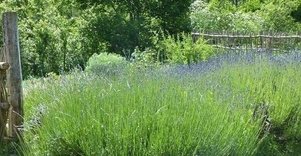One of the oldest buildings at the Pope Estate is the old hunting castle that was built in 1653. The mansion was built in 1608 or 1620. The Neo-Gothic porch was added in 1840. The interiors of the mansion have been preserved since the 18th century and the 3rd quarter of the 19th century, including wood panelling, original decorated ceilings, a front door in the style of Classicism, and a Rococo stove. Sadly, one of the oldest buildings - the home of the estate’s governor - burned down in 2018, but the rest of the estate did not suffer and retained its beauty. Visitors will be delighted about the aromatic garden of phloxes, as well as the impressive oak trees. Worth a look is the hillock behind the main building of the estate, near which there used to be a narrow-gauge railroad (the Pope Station). The other buildings cover a fairly extensive territory, and so it is worth spending a few hours to tour the village of Pope.The Pope Estate and its park are among the best-preserved estates in the area. Since March 1941, it has housed a school. Most of the trees in the park are common, but there are a few rare ones.
The Pope Estate and its park (1840) are among the best-preserved estates in the area. Since 1940, it has housed a school and other institutions. Most of the trees in the park are common, but there are a few rare ones, including five Crimean oak trees. The largest copper beech in Latvia is in the yard, as is a large bed of traditional phloxes that are red and white. During the Soviet occupation, Pope was proud of a large apple and pear orchard which covered 3.6 ha of land and featured a large variety of fruit trees that were collected by a gardener called Grīnvalds. Today the garden is privately owned and is not available to visitors. The managers of the garden have established a stock company which harvests fruits to be delivered to schools in Latvia. An unexpected find involved ten large sweet cherry trees near the next door Rojnieki homestead. Four of the trees are very old and were large 70 years ago. The trees are covered with moss, but still produce high-quality fruit.





















